In Pictures: The Art Of Video Games @ The Smithsonian
For decades, video games were seen by many strictly as entertainment. However, a new exhibit presented by the Smithsonian American Art Museum compels us to look at them as part of our culture. We walk through the 40-year evolution of games and platforms.
Welcome To The Art Of Video Games
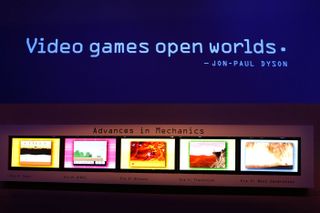
The history of video games is relatively brief; the first examples were created in the early 1970s. Because the medium is still so new, we have the pleasure of examining gaming with some of its most prominent highlights fresh in our own memories.
It was only a matter of time before video games started being thought of as art, and the first exhibition showcasing graphics, technology, and storytelling recently premiered at the Smithsonian American Art Museum. Tom’s Hardware was on-hand to witness this extraordinary event.
Photo: © Conway Yen; Some images in this article supplied by and copyright Conway Yen
Concept Art From Sega And Blizzard
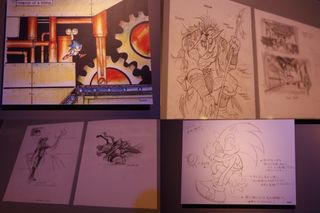
Upon our entry into the exhibit, we were greeted by several examples of concept art. You've probably seen many of the characters that these drawings turned into on-screen.
Although concept art is still included in game manuals, checking out the originals is special indeed.
Photo: ©Conway Yen
Zergling Concept Art
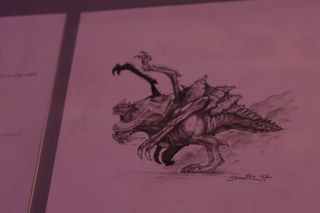
We hope that you’ve already built your first marine; six of these guys are incoming, and they look hungry.
Stay on the Cutting Edge
Join the experts who read Tom's Hardware for the inside track on enthusiast PC tech news — and have for over 25 years. We'll send breaking news and in-depth reviews of CPUs, GPUs, AI, maker hardware and more straight to your inbox.
Photo: © Conway Yen
Five Games That Changed Gaming
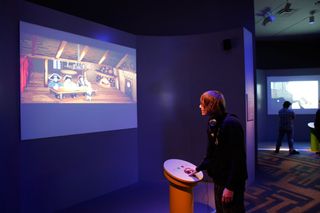
This exhibit consists of five games that visitors can play: Pac-Man, Super Mario Brothers, The Secret of Monkey Island, Myst, and Flower. These titles were chosen for their interactivity, and the game play elements they introduced that set the standard for subsequent games.
Here, a visitor is seen trying to complete The Secret of Monkey Island (LucasArts, 1990) in the two-minute allotted time for guests. Good luck!
Photo: © Conway Yen
A Trip To The Console Room
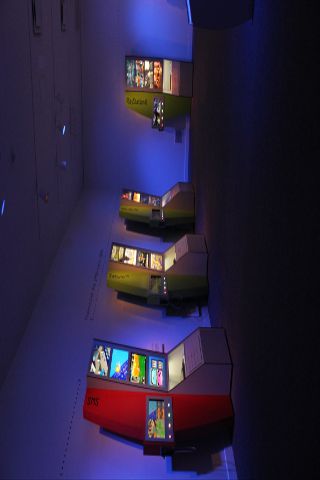
This is Tom's Hardware, after all. So, we were interested to which of the enabling gaming platforms would receive attention.
The Art of Video Games actually highlights 20 different systems, from the 1977 Atari VCS to the 2006 PlayStation 3. Each console kiosk features a title from each of four genres: action, target, adventure, and tactics.
A pool of 240 games was selected by the guest curator, with help from game developers, designers, industry pioneers, and journalists. The most popular were picked by the public through online polling. More than 3.7 million votes were cast from people in 175 countries. Should more genres have been included? We think so, as many beloved games ended up pitted against each other in the contest.
Photo courtesy of the Smithsonian American Art Museum
The Four Top Atari VCS Titles
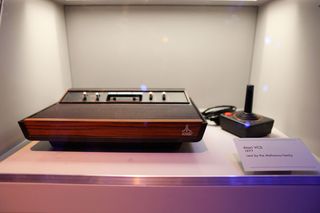
Atari VCS: 1977, Atari Inc.
A game console released by Atari, Inc, the Atari VCS (later called the Atari 2600) was immensely popular in the late '70s and '80s, selling over 30 million units.
The Four Genre Winners
Action
Pac-Man: 1981, Namco. The quintessential arcade game, Pac-Man was ported from its arcade version to Atari VCS in six short weeks for the holiday season; however, the extreme limitations of Atari VCS prevented Pac-Man from being as big a hit in the home as originally intended. The game was ported and squeezed into four kilobytes of memory, which was a tiny fraction of the original. For comparison, the Tom’s Hardware logo at the top of this page is 5.6 KB.
Target
Space Invaders: 1980, Taito
Adventure
Pitfall!: 1982, Activision
Tactics
Combat: 1977, Atari
Photo: ©Conway Yen
The Four Top Intellivision Titles

Intellivision: 1979, Mattel
The Four Genre Winners
Tactics
Utopia: 1981, Mattel. Utopia was the first real simulation, sandbox-type game built for the home console. Two players duel for the highest score by developing their own island and funding attacks on their opponent’s island. The inspiration for this game came from the creator’s (Don Daglow) days as a middle school teacher, where he made a 2500 square foot map of the world and developed a geography game for it. His students would stand on different parts of the map that represented their nations, and were the very first Utopia players.
Action
TRON: Maze-a-Tron: 1982, Mattel
Target
Star Strike: 1981, Mattel
Adventure
Advanced Dungeons & Dragons: 1982, Mattel
Photo: © Conway Yen
The Four Top ColecoVision Titles

ColecoVision: 1982, Coleco Industries
Coleco Industries’ second console, ColecoVision, brought arcade-quality gaming to the home. Although technically less advanced, it beat its primary rival, the Atari 5200, with the success of games like Donkey Kong.
The Four Genre Winners
Action
Donkey Kong: 1982, Nintendo. Designed by Nintendo in 1981, Donkey Kong was the first arcade game to have a complete story. A giant ape, Donkey Kong, kidnaps a girl, Pauline, and our hero, Jumpman (soon to be Mario), must save her by defeating all antagonists. The ColecoVision version of this game closely resembled the original arcade game; a difficult achievement for the early 1980s.
Target
Zaxxon: 1982, Sega
Adventure
Pitfall II: Lost Caverns: 1984, Activision
Tactics
Star Trek: Strategic Operations Simulator: 1984, Sega
Photo: © Conway Yen
The Four Top Commodore 64 Titles
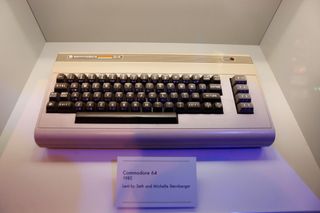
Commodore 64: 1982, Commodore International
Commodore 64 faced lots of competition during its reign, but thanks to aggressive pricing and a wide range of software titles, easily won the sales war, selling over 12.5 million units in the process. Losers included the Apple II, Atari’s 8-bit consoles, and IBM’s PC.
The Four Genre Winners
Target
Attack of the Mutant Camels: 1983, Llamasoft. Nothing is scarier than mutant camels. British designer Jeff Minter understood this and created a game based loosely on a scene from Star Wars Episode V: The Empire Strikes Back, where giant four-legged robots attacked a rebel base on the planet Hoth. Minter thought these robots looked like mechanical camels, and brought his vision to the player’s screen. This pop-culture connection and in-game humor made Attack of the Mutant Camels an underground hit with Commodore 64 owners.
Action
Jumpman: 1983, Epyx
Adventure
The Bards Tale III: Thief of Fate: 1987, Interplay
Tactics
Sid Meier’s Pirates!: 1987, MicroProse
Photo: © Conway Yen
The Four Top NES Titles

Nintendo Entertainment System: 1983, Nintendo
Some would argue that the Nintendo Entertainment System is the best console of all-time, and many would agree. Having sold more than 61 million units, the NES dominated the late 1980s gaming scene. It was only eclipsed by Sega's Genesis in 1988 and Nintendo’s own Super NES in 1990.
The Four Genre Winners
Adventure
The Legend of Zelda: 1987, Nintendo. The Legend of Zelda became quite the legend indeed, spawning multiple follow-ups for a number of different console systems. The inspiration for this game came from adventures that designer Shigeru Miyamoto had during his childhood. He would frequently explore caves, forests, lakes, and villages near his hometown of Sonobe, Japan. Once, while wandering in a forest, he discovered a secret entrance to a cave and ultimately gathered up the courage to explore it with nothing more than a lantern in his hand. Miyamoto wanted to convey the wonder of exploring hidden places, as well as the coming-of-age story of Link on his quest to defeat Ganon and save Princess Zelda.
Action
Super Mario Brothers 3: 1990, Nintendo
Target
1943: The Battle of Midway: 1988, Capcom
Tactics
Desert Commander: 1989, Kemco
Photo: © Conway Yen
The Four Top Sega Master System Titles
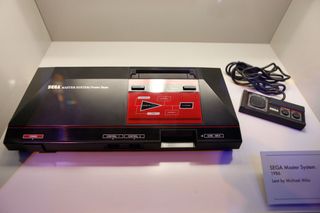
Sega Master System: 1985, Sega
The Sega Master System was released in Japan in 1985, and was technically superior to NES. But it failed to garner as much support and didn’t sell as well. Sega did move more than 10 million units, though, so it can hardly be labeled a failure.
The Four Genre Winners
Adventure
Phantasy Star: 1988, Sega. Phantasy Star was a technical behemoth for its era. The game had fully-detailed overhead maps, including views of each local environment that the player traveled through. It also included towns and caves, and the game pioneered a perspective shift from 2D to 3D for navigating them. The technical prowess of Phantasy Star was matched by its story; protagonist Alis Landale’s adventures explored themes of revenge, oppression, religion, and redemption.
Action
Marble Madness: 1992, Atari
Target
After Burner: 1988, Sega
Tactics
Spy vs. Spy: 1988, First Star
Photo: © Conway Yen
-
Nintendo Maniac 64 Star Fox Assult? Seriously? Really should have put Metroid Prime under "Target" and Smash Bros. Melee under "Action" instead.Reply
And no Sonic platformer for the Genesis?! What about BLAST PROCESSING?!
EDIT: Oh, no wonder. Looking at the nominees, Melee never even got nominated (wat), and the only Sonic platformer nominated was Sonic CD - the one most people never got to play.
If they were smart, they'd re-evaluate the consoles that are 2001 and newer in say, 10-20 years since it'll be considerably more obvious which games have stood the test of time as notable. This is especially true for the current generation systems which still have some big titles coming out (Xenoblade in particular comes to mind). -
silverblue Very happy to see the Master System in there (my first console), but even happier to see three Panzer Dragoon titles, of which I am currently replaying Saga (my favourite game ever).Reply -
Super_Nova Great to see Gradius V, Panzer Dragoon series, Rez and Spy vs Spy (loved those games) and I agree they withstood the test of time very well but where are f.i. Radiant Silvergun and Nights in to dreams (Saturn)? I also miss something about arcade games throughout the years.Reply -
shin0bi272 no turbografix 16? tisk tiskReply
Also Im pretty sure mass effect was a big game on pc not just friggin minecraft or flow -
spookyman buzznutSpy vs spy?????Reply
The reason Star Fox was chosen because it was an actual 3D game on SNES, which at the time had just a simple 16bit processor. It pushed the limits of the system.
Yes I agree that missing Sonic for Sega Genesis was not good choice. Though Earthworm Jim was very popular back then.
-
jaquith ...Crap I'm getting old! :( The scary thing is I played on many of those consoles and games and now they're in a museum!Reply -
allawash Anybody who owned a Saturn and played Guardian Heroes knows it should have been listed for action on that console. Hands down the best sides scrolling action game I ever played.Reply
Most Popular






